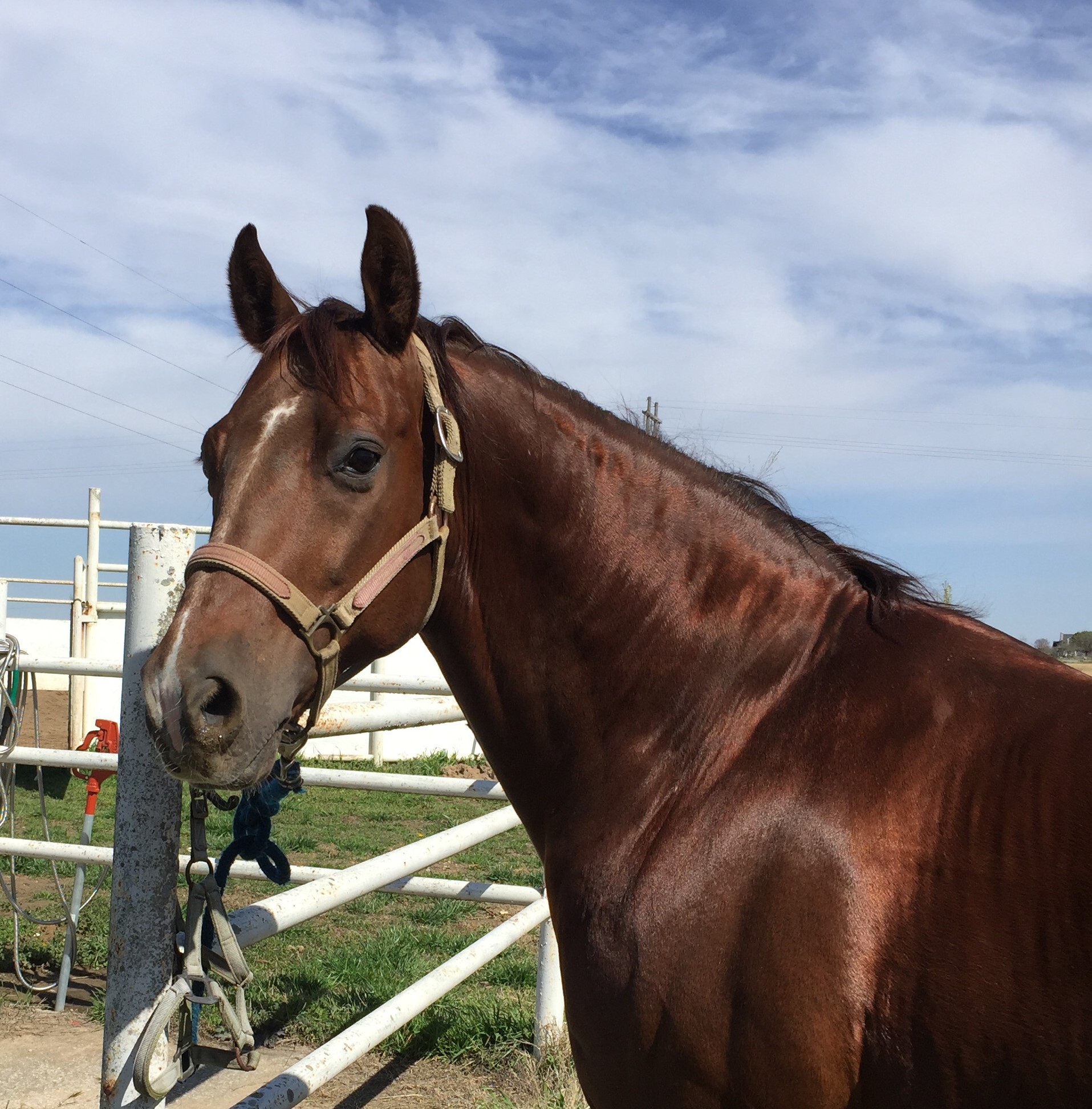
Sean Johnson Professional Reining Horse Trainer, Glenpool, OK
This post will concentrate on exercises for rollbacks, turnarounds and the counter canter on a finished reining horse.
This was my second trip to ride with Sean Johnson. After losing my trainer at home, I contacted Sean to see if it would be possible to come back to Oklahoma to ride with him a few times a year. Sean put me on a nice gelding named Cluck Cluck Lena. He is so much like my horse Irish I was able to concentrate on improving my riding without having to deal with the big learning curve that comes with riding a different horse. While I was there we worked on all the reining maneuvers. I have outlined some of the main exercise we focused on below.
Rollback Exercise
I like to call this exercise the mental gymnastics exercise. This exercise is designed to help load the outside hock in preparation for the rollback and lead departure in the opposite direction. To do this exercise for the left rollback, start backing in a circle to the right. Pick up your left hand and keep right hand slightly lower. The hand position is the same as when asking for the rollback. Your left leg should be on the cinch and your right leg is behind. As you are backing up look slightly over to the left. Once the horse starts to soften in the backing up, start to lower your hand and keep backing up. Than ask for the rollback by bringing your hand to your left shoulder and turning your head and shoulders in the direction you want to lope off. To do a right rollback reverse the backup direction and the hand and leg position. The way I think of the leg position is to place them where they would be if I was doing a simple rollback but adding in backing circle as a windup before the release. These videos will demonstrate how to do the exercise.https://youtu.be/nxqXJcQKkXU
A few other thoughts about the rollback.
In practice it is good to ask for the lope off a step or two past your line. This helps teach your horse not to anticipate loping off down the line since they are not conditioned to only rolling back a set spot every time.
Think of the rollback as a quick movement, that needs the rider to move slowly to achieve a smooth maneuver.
Turnaround Exercise
The purpose of this exercise is to get the rear inside pivot foot to drive deeper under the horses’ body. Start by trotting a circle. Pick your outside hand up and place it on the horses’ neck and keep your inside hand down and out. Using your inside leg, push the inside hip toward the outside of the circle. Keep your outside leg up near the cinch. Once you feel the horse is crossing over/under well, then stop and ask them to turn in the direction you were trotting. If you were trotting right then turn right. The tendency is for the horse to start moving their front end faster. To block this from happening you can pick your outside hand up and tip the horses’ face to the outside of the circle. Check out these videos to see how the exercise is done. https://youtu.be/05BWL50GT9M https://youtu.be/05BWL50GT9M
Counter Canter Exercise
This exercise helps you use your legs and seat to feel when your horse starts to push or lean on you. Start by looping in the counter canter around the length of the arena. As you go down the long side of the arena start to lengthen the horse’s stride. About 3 – 4 strides before the corner slow down, then make a 90 degree turn and stay parallel to the short side of the square and make another 90 degrees turn, once you are pointing straight, drive down the long side. During these turns the horse will have a tendency to drop to the inside. You will need to use your inside leg to keep the horse stood up. This exercise also helps develop your ability to rate the horses’ speed. This will also help you use your body position to maintain a straight line, which is needed when doing a sliding stop. This video explains the exercise.
I was fortunate to be able to spend eight days riding with Sean. The ability to repeat the exercise multiple days in a row makes it easier to learn the feel of the horse’s movement. Now that I have the feel, I can take the information home and practice on my own horse.
After working at home for a few days Irish and I really started to click with these exercises. I am looking forward to some even snappier rollbacks and smoother turnarounds.
While riding with Sean Johnson I logged 20 hours toward the AQHA Horseback Riding Program. I also earned my 2000 hours reward gift. A Professional Choice Saddle Pad Case. Go to the AQHA website to find out more about the Horseback Riding Program and AQHA. https://www.aqha.com/trail-riding/programs/aqha-horseback-riding-program
For more information about Sean Johnson Professional Reining Horse Trainer go to: http://johnsonreining.com/
I hope you have enjoyed this post and will share it with your friends.
For more reining horse training blogs go to the post page at https://horsetaillegacy.com/jgjs




